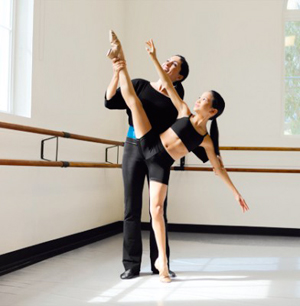Teaching to Learn, Part I
 As dance teachers, we have all been there. We introduce a new step to students in class and it is just not sinking in to one, or sometimes a group, of dancers. They are frustrated, you are frustrated, and you are left thinking what else can I do? I have explained and demonstrated this a zillion times. What can I do to help them understand?
As dance teachers, we have all been there. We introduce a new step to students in class and it is just not sinking in to one, or sometimes a group, of dancers. They are frustrated, you are frustrated, and you are left thinking what else can I do? I have explained and demonstrated this a zillion times. What can I do to help them understand?
Scholars agree there are three basic styles of learning: auditory, visual, and kinesthetic. You may be surprised to know, these three basic genres are also broken down into seven, more specific, sub-categories:
- Visual (spatial)- learners use pictures, images and spatial concepts for understanding
- Aural (auditory-musical)-learners use sound and music for understanding
- Verbal (linguistic)- learners use words, both in speech and writing, for understanding
- Physical (kinesthetic)-learners use their hands, body, and sense of touch for understanding
- Logical (mathematical)-learners use logic, reasoning, and systems for understanding
- Social (interpersonal)-learners understand when they learn in groups or with other people
- Solitary (intrapersonal)-learners work alone and use self-study for understanding
Most learners are dominant in two of these sub-categories and simple observation can help us teachers recognize what type of learner our students are.
Obviously, there is not enough time in a single dance class to dissect each step and apply it to all seven sub-categories. But when we teachers introduce a new step and see our students struggling, we need to step outside of our teaching comfort box, see what type of learner, or learners, our students are, and then teach to their learning style.
This is how I would teach a sissonne fermée to the seven learning styles.
- Visual– I would show pictures of dancers in sissonne fermée with proper form and alignment and then ask my students to try and make this picture with their body
- Aural– I would change the tone and volume of my voice as I described the step in its plié, jumping, and landing forms. I would find music that sounds airy, bouncy, and light so students could emulate the sound they heard with their movement.
- Verbal-I would explain the mechanics of the jump and review the fundamentals of dance they already know (5th position, arabesque, sauté motions) that make up this new step.
- Physical– I would physically place the student’s body into the proper placement and alignment so the student could physically feel, and others could physically see, the movement needed to perform this step.
- Logical-I would explain how using proper technique, like deep plié, square body, and a carried back, help the dancer execute a sissonne fermée.
- Social– I would ask the dancers to observe their fellow classmates in class and learn from them. I would encourage them to notice their classmates strengths and weaknesses and then have them complete the step.
- Solitary– After teaching the step, I would ask the class to practice and review on their own before doing the exercise. Ideally, these moments of solitude would allow the students to digest, apply, and retain the information they had been given.
So, why change how we teach dance now? If auditory teaching worked for so many years in the past, why would it not carry through to the present? I think the studio dynamic today is completely different from what it was in the time of my dance teachers. When my instructors were students, their ballet school’s purpose was to produce professional dancers. In this selection process, I think non-traditional learners were weeded out, not because they were not capable of being professional dancers, but because they could not conform to traditional auditory teaching.
I believe successful studios today not only strive to help their students reach their maximum potential and ability in dance, but they also help them become healthy, confident, and competent members of society. And teachers, isn’t that our job? To nurture, foster, and grow not only the next generation of dancers, but also the next generation of dance contributors, benefactors, audience members, and future student parents?
Until next time, teach, inspire, and grow!
Reference:
Overview of Learning Styles at www.learning-styles-online.com



